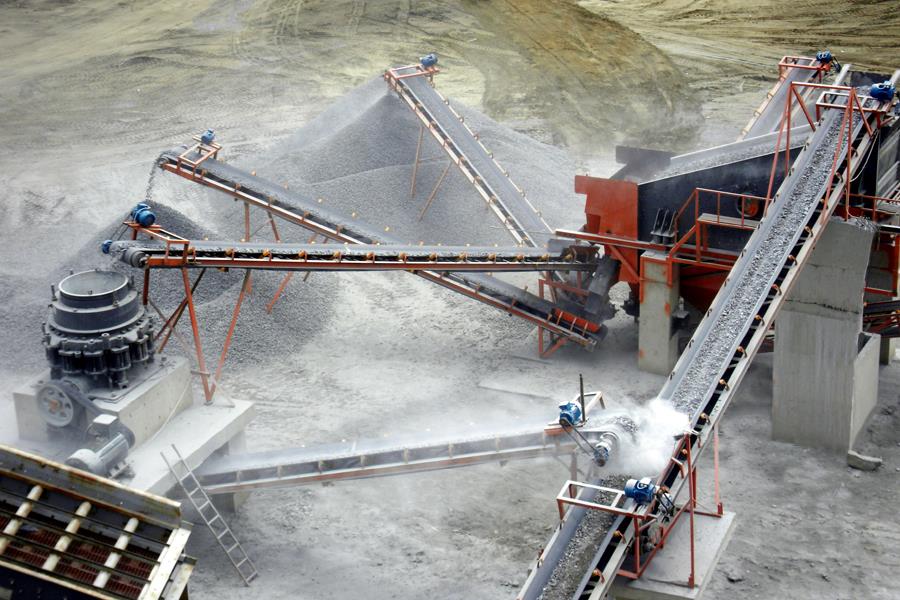

Feldspar is one of the more common minerals. It is a common group of aluminosilicate rock-forming minerals containing calcium, sodium and potassium. Feldspar is found in up to 60 per cent of the Earth's crust and can occur in igneous, metamorphic,
Feldspar is one of the more common minerals. It is a common group of aluminosilicate rock-forming minerals containing calcium, sodium and potassium. Feldspar is found in up to 60 per cent of the Earth's crust and can occur in igneous, metamorphic, and sedimentary rocks. Feldspar is the main mineral component of almost all igneous rocks and is important for the classification of rocks.
The hardness of feldspar fluctuates from 6-6.5, specific gravity fluctuates from 2-2.5, brittle, with high compressive strength and strong chemical stability to acids. There are many kinds of feldspar, such as sodium feldspar, calcium feldspar, barium feldspar, barium ice feldspar, micro-plagioclase feldspar, orthoclase feldspar, tremolite and so on. They all have a glassy luster and come in a variety of colours, from colourless to white, yellow, pink, green, grey, black and so on. Some are transparent, some translucent. The feldspars themselves should be colourless and transparent, the reason why they are coloured or not completely transparent is because they contain other impurities. Some are massive, some are platy, some are columnar or acicular, and so on. Generally feldspars present in volcanic and metamorphic rocks are very small, only 0.1-10 mm, in porphyries up to 5-10 cm, and in pegmatites some up to tens of metres.
Feldspar use
1, feldspar is the raw material of ceramics and glass industry. Some feldspars have beautiful variegated or halo colours and can be used as materials for gemstones.
2、Because of the feldspar melting point between 1100-1300 ℃, good chemical stability, when co-fused with quartz and other aluminosilicates fluxing effect, so feldspar is often used in the manufacture of glass and ceramics co-solvent.
3, feldspar can be made into ceramic glaze, ceramic glaze is mainly composed of feldspar, quartz and clay raw materials, of which the content of feldspar can be up to 15% -35% or more.
Feldspar processing technology
Feldspar in the endowment of the main harmful minerals are mainly iron minerals, other impurity minerals are clay, mica, garnet, tourmaline, chlorite, quartz and so on.
According to the different types and properties of feldspar deposits, the beneficiation processing methods used include crushing, grinding, magnetic separation and iron removal. In recent years, with the reduction of feldspar ore resources, quality decline, increasing requirements for product quality, and the development of comprehensive utilisation of mines, the introduction of more complex sorting operations such as re-election, flotation, high gradient magnetic separation, etc., so as to achieve the purpose of removing quartz, mica, iron-containing titanium ore.
Related equipment
Jaw Crusher
Ball Mill
Classifier
Magnetic Separator
Flotation Machine
Previous: SMP Crusher
Next: SMP Crusher

Feldspar is one of the more common minerals. It is a common group of aluminosilicate rock-forming minerals containing calcium, sodium and potassium. Feldspar is found in up to 60 per cent of the Earth's crust and can occur in igneous, metamorphic,
Feldspar is one of the more common minerals. It is a common group of aluminosilicate rock-forming minerals containing calcium, sodium and potassium. Feldspar is found in up to 60 per cent of the Earth's crust and can occur in igneous, metamorphic, and sedimentary rocks. Feldspar is the main mineral component of almost all igneous rocks and is important for the classification of rocks.
The hardness of feldspar fluctuates from 6-6.5, specific gravity fluctuates from 2-2.5, brittle, with high compressive strength and strong chemical stability to acids. There are many kinds of feldspar, such as sodium feldspar, calcium feldspar, barium feldspar, barium ice feldspar, micro-plagioclase feldspar, orthoclase feldspar, tremolite and so on. They all have a glassy luster and come in a variety of colours, from colourless to white, yellow, pink, green, grey, black and so on. Some are transparent, some translucent. The feldspars themselves should be colourless and transparent, the reason why they are coloured or not completely transparent is because they contain other impurities. Some are massive, some are platy, some are columnar or acicular, and so on. Generally feldspars present in volcanic and metamorphic rocks are very small, only 0.1-10 mm, in porphyries up to 5-10 cm, and in pegmatites some up to tens of metres.
Feldspar use
1, feldspar is the raw material of ceramics and glass industry. Some feldspars have beautiful variegated or halo colours and can be used as materials for gemstones.
2、Because of the feldspar melting point between 1100-1300 ℃, good chemical stability, when co-fused with quartz and other aluminosilicates fluxing effect, so feldspar is often used in the manufacture of glass and ceramics co-solvent.
3, feldspar can be made into ceramic glaze, ceramic glaze is mainly composed of feldspar, quartz and clay raw materials, of which the content of feldspar can be up to 15% -35% or more.
Feldspar processing technology
Feldspar in the endowment of the main harmful minerals are mainly iron minerals, other impurity minerals are clay, mica, garnet, tourmaline, chlorite, quartz and so on.
According to the different types and properties of feldspar deposits, the beneficiation processing methods used include crushing, grinding, magnetic separation and iron removal. In recent years, with the reduction of feldspar ore resources, quality decline, increasing requirements for product quality, and the development of comprehensive utilisation of mines, the introduction of more complex sorting operations such as re-election, flotation, high gradient magnetic separation, etc., so as to achieve the purpose of removing quartz, mica, iron-containing titanium ore.
Related equipment
Jaw Crusher
Ball Mill
Classifier
Magnetic Separator
Flotation Machine
Previous: SMP Crusher
Next: SMP Crusher